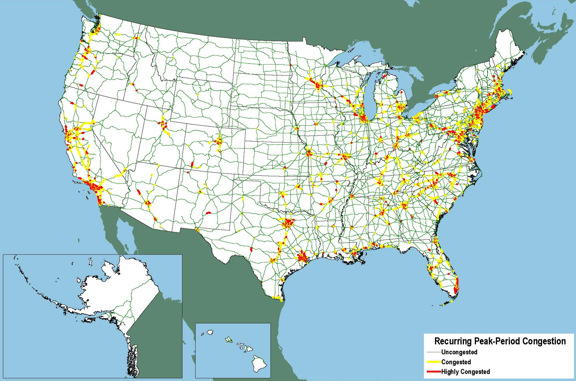Freight Facts and Figures 2008
Figure 3-8. Peak-Period Congestion on the National Highway System: 2002
Recurring congestion caused by volumes of passenger vehicles and trucks that exceed capacity on roadways during peak periods is concentrated primarily in major metropolitan areas. In 2002, peak-period congestion resulted in traffic slowing below posted speed limits on more than 10,600 miles of the NHS and created stop-and-go conditions on an additional 6,700 miles.

Note:
Highly congested segments are stop-and-go conditions with volume/service flow ratios greater than 0.95. Congested segments reduce traffic speeds with volume/service flow ratios between 0.75 and 0.95.
Source:
U.S. Department of Transportation, Federal Highway Administration, Office of Freight Management and Operations, Freight Analysis Framework, version 2.2, 2007.
![]() You will need the Adobe
Acrobat Reader to view the PDFs on this page.
You will need the Adobe
Acrobat Reader to view the PDFs on this page.